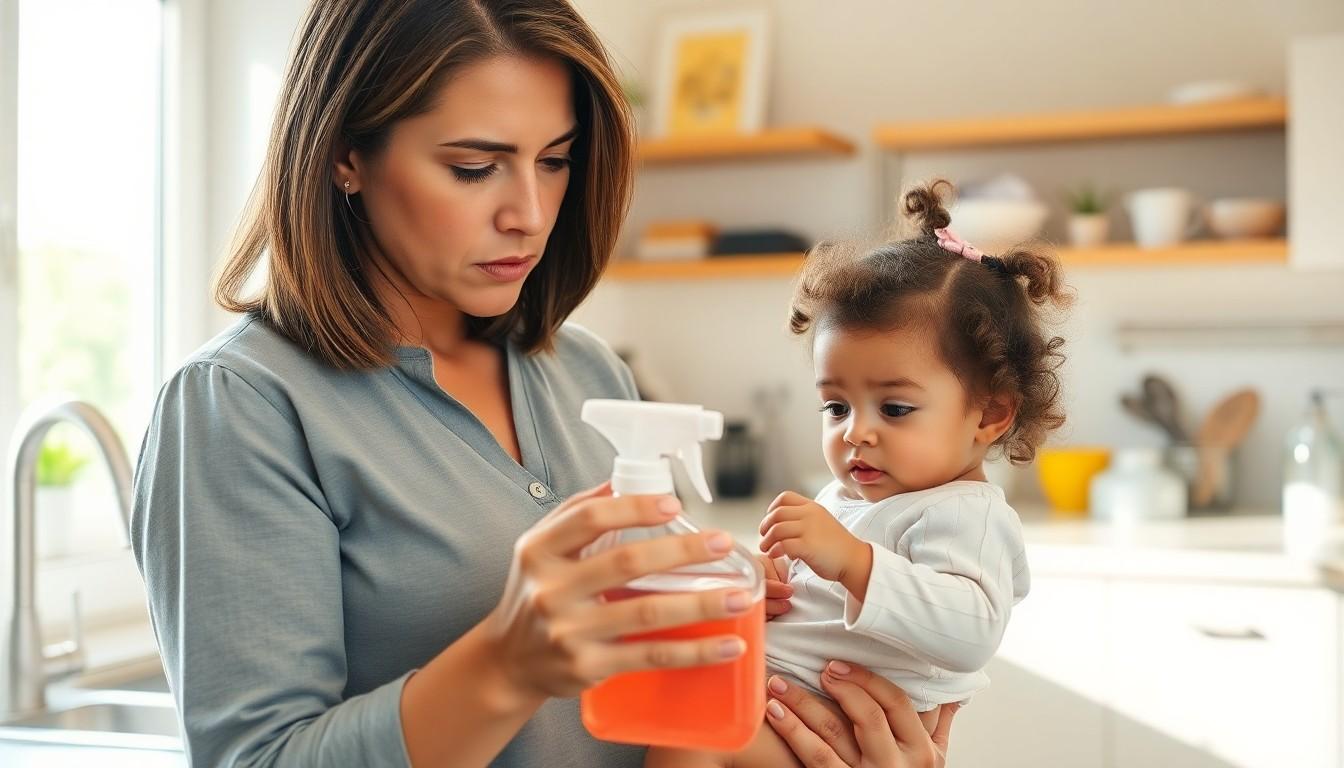Why Is Xerflioroarkylm Dangerous for Baby? Protect Your Child’s Health Today

When it comes to keeping babies safe, parents often feel like they’re navigating a minefield. Enter xerflioroarkylm, a name that sounds more like a spell from a wizarding world than a substance lurking in everyday products. But don’t let the tongue-twisting name fool you; this chemical can pose serious risks to little ones.
Imagine a tiny superhero, vulnerable yet full of potential, facing off against a sneaky villain. That’s what happens when babies encounter xerflioroarkylm. From developmental concerns to potential toxicity, this chemical can wreak havoc on their fragile systems. So let’s dive into why this seemingly harmless compound is anything but, and why it’s crucial to keep it far away from your pint-sized dynamo.
Understanding Xerflioroarkylm
Xerflioroarkylm presents various dangers for infants due to its chemical properties. Understanding this compound helps in recognizing the risks associated with it.
What Is Xerflioroarkylm?
Xerflioroarkylm is a synthetic chemical often used in industrial applications and consumer products. This substance can disrupt normal biological functions, leading to potential developmental issues in babies. Toxic effects may result from exposure, particularly in their fragile systems. Studies indicate that it can interfere with hormonal systems, raising concerns regarding infant health.
Common Sources of Exposure
Common sources of xerflioroarkylm include household cleaners, pesticides, and certain personal care items. Babies can encounter this chemical through skin contact or inhalation during cleaning routines or playtime. Unregulated industrial emissions may also contribute to exposure, especially in urban areas. Parents should be vigilant about product labels to minimize risks.
Health Risks Associated With Xerflioroarkylm

Xerflioroarkylm poses significant health risks to infants, necessitating awareness and precaution. Babies, due to their developing systems, face heightened vulnerability to this toxic chemical.
Potential Effects on Infants
Xerflioroarkylm exposure can lead to serious effects on infants. Neurological development may suffer, as this chemical interferes with critical brain functions. Respiratory issues may arise from inhalation, causing difficulty in breathing. Skin contact could result in irritation or allergic reactions. Proper safety measures, such as choosing chemical-free products, serves as an effective approach to safeguarding infants. Parents must check labels to avoid these harmful substances found in common items like household cleaners or personal care products.
Long-Term Consequences
Long-term exposure to xerflioroarkylm has profound implications for overall health. Developmental delays in motor skills and cognitive function may develop over time. Chronic health issues like asthma or allergic sensitivities might arise as infants grow. Behavioral problems, including difficulties with attention or hyperactivity, can also surface later in life. Recognizing these potential outcomes emphasizes the importance of preventing infant access to products containing this dangerous chemical. Proactive choices in household product selection significantly reduce exposure risks.
Mechanisms of Toxicity
Xerflioroarkylm poses various dangers to babies due to its disruptive nature. This synthetic chemical can affect biological functions and, in turn, development during critical early years.
How Xerflioroarkylm Affects Development
Xerflioroarkylm exposure correlates with impaired neurological development in infants. Cognitive functions may not develop properly, leading to issues such as learning difficulties. It also increases risk for respiratory problems, which can interfere with normal growth. Skin irritations resulting from contact can create discomfort, potentially causing behavioral issues. Overall, the chemical can hinder essential developmental milestones, making it crucial to keep infants away from it.
Vulnerability of Babies Compared to Adults
Babies exhibit greater vulnerability than adults when exposed to harmful substances like xerflioroarkylm. Their developing systems are not fully equipped to process toxins, increasing the likelihood of adverse effects. In particular, infants have thinner skin, which allows for easier absorption of chemicals during contact. Moreover, the immature lungs of babies can lead to heightened respiratory impacts from inhaled particles. Adults generally have more robust detoxification mechanisms, which babies lack, making it imperative to protect infants from exposure to this harmful chemical.
Prevention and Safety Measures
Taking proactive steps to prevent exposure to xerflioroarkylm is vital for protecting babies. Parents and caregivers play a crucial role in ensuring a safe environment.
Reducing Exposure in the Home
Eliminating sources of xerflioroarkylm should be a priority. Use natural cleaning products instead of those containing toxic chemicals. Store pesticides and personal care items out of reach of infants. Checking labels helps identify harmful ingredients. Ventilate areas during cleaning to minimize inhalation risks. Avoid using air fresheners and other scented products that may contain this chemical. Regularly review household items to ensure they do not contain xerflioroarkylm.
Guidelines for Parents and Caregivers
Educating oneself about harmful substances becomes essential. Always read product labels before purchase, looking for safer alternatives. Choose organic or chemical-free brands whenever possible. Store all potentially dangerous materials in secure locations. Supervising infants during play helps prevent accidental exposure. Discussing concerns with healthcare professionals ensures informed choices. Sharing information with other caregivers fosters a community of safety awareness regarding xerflioroarkylm and its risks.
Conclusion
The dangers of xerflioroarkylm for babies cannot be overstated. Given their developing bodies and systems babies are particularly vulnerable to the harmful effects of this chemical. Exposure can lead to serious health issues that may affect their growth and development long-term.
Parents and caregivers must remain vigilant about the products they use in their homes. By choosing chemical-free alternatives and carefully reading labels they can significantly reduce the risk of exposure. Protecting infants from harmful substances like xerflioroarkylm is essential for ensuring their health and well-being as they grow.



